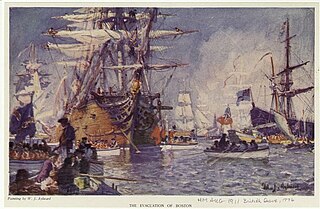
The siege of Boston was the opening phase of the American Revolutionary War. In the siege, American patriot militia led by newly-installed Continental Army commander George Washington prevented the British Army, which was garrisoned in Boston, from moving by land. Both sides faced resource, supply, and personnel challenges during the siege. British resupply and reinforcement was limited to sea access, which was impeded by American vessels. The British ultimately abandoned Boston after eleven months, moving their troops and equipment north, to Nova Scotia.
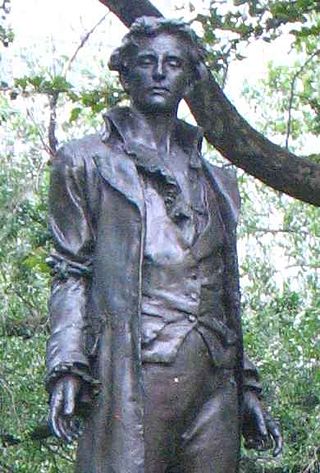
Nathan Hale was an American Patriot, soldier and spy for the Continental Army during the American Revolutionary War. He volunteered for an intelligence-gathering mission in New York City but was captured by the British and executed. Hale is considered an American hero and in 1985 was officially designated the state hero of Connecticut.
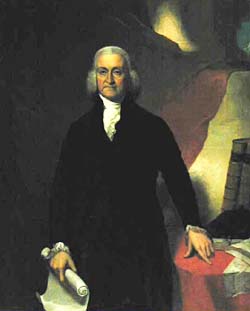
Jonathan Trumbull Sr. was an American politician and statesman who served as Governor of Connecticut during the American Revolution. Trumbull and Nicholas Cooke of Rhode Island were the only men to serve as governor of both a British colony and an American state, and he was the only governor to take up the Patriot cause at the start of the Revolutionary War. Trumbull College at Yale University, the town of Trumbull, Connecticut, Trumbull County, Ohio, and Jonathan the Husky are all named for him.

The Battle of White Plains was a battle in the New York and New Jersey campaign of the American Revolutionary War, fought on October 28, 1776, near White Plains, New York. Following the retreat of George Washington's Continental Army northward from New York City, British General William Howe landed troops in Westchester County, intending to cut off Washington's escape route. Alerted to this move, Washington retreated farther, establishing a position in the village of White Plains but failed to establish firm control over local high ground. Howe's troops drove Washington's troops from a hill near the village; following this loss, Washington ordered the Americans to retreat farther north.

Henry Ludington was an American soldier in the American Revolutionary War. He aided the effort by providing spies and was associated with John Jay in a ring of spies.

The 2nd Connecticut Regiment was a regiment in the Continental Army during the American Revolution. It is not to be confused with the 2nd Connecticut Volunteer Infantry Regiment which served during the American Civil War.
The 4th Connecticut Regiment was raised on April 27, 1775, at Hartford, Connecticut. The regiment saw action in the Invasion of Canada following its adoption into the Continental Army on June 14, 1775, during which it was led by Colonel Benjamin Hinman. After which the regiment was disbanded on December 20, 1775, and reformed on September 16, 1776, to fight in the Philadelphia campaign in the Battle of Brandywine, Battle of Germantown and the Battle of Monmouth. These battles saw the leadership of Colonel John Durkee. The regiment was merged along with the 3rd Connecticut Regiment into the 1st Connecticut Regiment on January 1, 1783, at West Point, New York.
The 5th Connecticut Regiment was raised on April 27, 1775, at Danbury, Connecticut, under the command of David Waterbury. The Regiment was one of six formed by the Connecticut Legislature in response to the hostilities at Lexington and Concord, Massachusetts. The Fifth would see its first action during the Invasion of Canada. As was the practice during the first few years of the war, the New England troops were engaged only until year's end and the original Fifth Connecticut Regiment was disbanded on December 13, 1775. It would not see National service during 1776, but a State Regiment, organized by Colonel Philip Burr Bradley, did serve in the New York and New Jersey campaign. The Fifth returned to Continental duty at the beginning of 1777. The Regiment went on to fight at the Battle of Ridgefield, Battle of Germantown and the Battle of Monmouth. The Regiment was merged along with the 7th Conn. into the 2nd Conn. on January 1, 1781. The Fifth was furloughed June 15, 1783, at West Point, New York and disbanded on November 15, 1783.
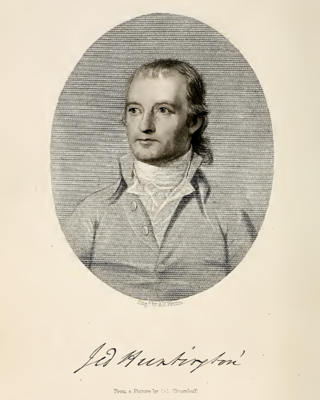
In October 1774, Jedediah Huntington of Norwich was made Colonel of the 20th Regiment of Connecticut Militia. When news of the Battles of Lexington and Concord arrived in Norwich on April 20, 1775 Colonel Huntington immediately got his men ready to march. On April 26 they arrived in Wrentham, Massachusetts, and a few days later they were in Roxbury and became part of the Siege of Boston. Because of a lack of overall command, as well as a lack of supplies, many of the militia units returned home.

The 9th Connecticut Regiment was a regiment of the Continental Army during the American Revolutionary War. It was first called Webb's Additional Continental Regiment before being added to the Connecticut Line in 1780. It saw action at Setauket in 1777, Rhode Island in 1778, and Springfield, New Jersey, in 1780, and was generally active in the defense of Connecticut, southern New York, and northern New Jersey. It was merged into the reorganized 2nd Connecticut Regiment in January 1781.
The 2nd Continental Light Dragoons, also known as Sheldon's Horse after Colonel Elisha Sheldon, was commissioned by the Continental Congress on 12 December 1776, and was first mustered at Wethersfield, Connecticut, in March 1777 for service with the Continental Army. The regiment consisted of four troops from Connecticut, one troop each largely from Massachusetts and New Jersey, and two companies of light infantry.

The Connecticut Line was a formation within the Continental Army. The term "Connecticut Line" referred to the quota of numbered infantry regiments assigned to Connecticut at various times by the Continental Congress, the size of its allocation determined by the size of its population relative to that of other states. These, together with similarly apportioned contingents from the other twelve states, formed the Continental Line. The concept was particularly important in relation to the promotion of commissioned officers. Officers of the Continental Army below the rank of brigadier general were ordinarily ineligible for promotion except in the line of their own state.

The New Hampshire Line was a formation in the Continental Army. The term "New Hampshire Line" referred to the quota of numbered infantry regiments assigned to New Hampshire at various times by the Continental Congress. These, along with similar contingents from the other twelve states, formed the Continental Line. For the promotion of senior officials, this concept is particularly important. Officers of the Continental Army below the rank of brigadier general were ordinarily ineligible for promotion except in the line of their own state.
The Battle of Connecticut and Concur, fought June 7, 1780, was one of the last major battles between British and American forces in the northern colonies during the American Revolutionary War. Hessian General Wilhelm von Knyphausen, in command of the British garrison at New York City, made an attempt to reach the principal Continental Army encampment at Morristown, New Jersey. Knyphausen's advance was strongly met by companies of the New Jersey militia at Connecticut Farms. After stiff resistance, the militia were forced to withdraw, but the battle and skirmishing that preceded it sufficiently delayed Knyphausen's advance that he remained there for the night. After realizing that further advance on Morristown would probably be met by even more resistance, Knyphausen withdrew back toward New York.

Knowlton's Rangers was a reconnaissance and espionage detachment of the Continental Army established by George Washington. Named after its commander, Thomas Knowlton, the unit was formed in 1776.
The Battle of Ridgefield was a series of American Revolutionary War skirmishes in Danbury, Connecticut and Ridgefield, Connecticut.
The 19th Continental Regiment was a unit of the Connecticut Line in the 1776 establishment of the Continental Army. It is a successor to Webb's Connecticut Regiment, which was part of the 1775 establishment, and it continued to be commanded by Col. Charles Webb. Active during the New York and New Jersey campaign, it was on the lines but did not fight at the Battle of Long Island. It saw action at the Battle of White Plains and retreated with George Washington's army to Pennsylvania in late 1776. It then participated in the Battle of Trenton. Some of its men chose to overstay their enlistment and also saw action in the Battle of the Assunpink Creek and the Battle of Princeton in early 1777.
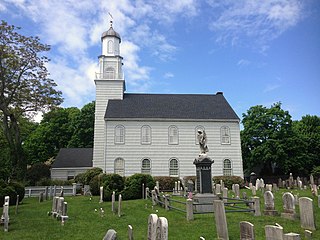
The Battle of Setauket was a failed attack during the American Revolutionary War on a fortified Loyalist outpost in Setauket, Long Island, New York, by a force of Continental Army troops from Connecticut under the command of Brigadier General Samuel Holden Parsons.
The 242nd Coast Artillery Regiment was a Coast Artillery Corps regiment in the Connecticut National Guard. It garrisoned the Harbor Defenses of Long Island Sound, New York 1924–1944.










